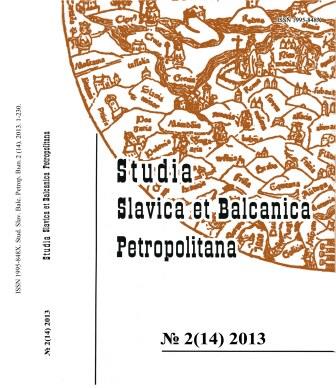К вопросу о структуре русской армии в битве при Орше
On the question of the structure of the Russian army at the Battle of Orsha
Author(s): Mikhail Mkihajlovich Bentsianov, Aleksey Nikolaevich LobinSubject(s): History
Published by: Издательство Исторического факультета СПбГУ
Keywords: Battle of Orsha in 1514; lists of Russian prisoners of war; Russian-Lithuanian War; genealogy
Summary/Abstract: Unlike many war conflicts of the first half of 16 century the course of the battle of Orsha is well reflected in historic sources and the data concerning it might be used to reconstruct the organization of the Russian army of the period. The lists of the Russian captives prisoned in the GDL castles contained in Lithuanian Metrics are of primary importance for the subject. Only five such lists formed in between 1518 and 1538 had been preserved. “Prisoners of the great battle”- i.e. captives of the Orsha battle of 1514- are sorted out in these lists. In later list of 1538 to which many new names were added, there is no such distinction. With a certain assumption one may count up 193 names of sluzhilye ludi mentioned in different lists of the Lithuanian Metrics and Byelorussian-lithuanian chronicles as captives of the Orsha battle. Using statistic analyzes method this number might be regarded as a selection of Moskovite side participants. We must stress its random nature. To become a prisoner of the Lithuanian soldier could different people from a highest rank commanders (probably, they were “hunted” after) to ordinary deti boyarskie taking into account the chaotic retreat of the Russians. But due to that we may know what territorial groups of the Russian army were represented in this battle. As a total we may count up 18 territorial groups of sluzhilye ludi excluding Meschera Tatars under Mirza Sivinduk command (they were 6 or just 3,1% of the captives known). No less than 33,2 % (and might be even up to 35,8%) of total amount of the known captives formed people from the North-Western territories, with evident prevail over the rest of the Russian army corporations. Taking into account all the pomeshiki of Vodskaya and Derevskaya pyatina (1250 deti boyarskie or 23,3% of prisoners known from historic sources) we might state that total number of participating in the battle along with Tatars might be up to 5400 according to our proportion (that is not counting common slugi). This proportion might slightly change to lesser if new data concerning pomeshiki of Vodskaya and Derevskaya pyatina would be discovered. As representatives of Bezhetskaya pyatina and other Novgorod territories are absent among the captives of the Orsha battle we could estimate the overall possible number of deti boyarskye from this region in the battle as 2000-2300 person. Considering the Novgorod people prevailing one may state that sluzhilye ludi in the Russian Army were no more than 6000. Unfortunately this method of reconstruction still needs improving and doesn’t let us estimate an exact number of the Russian Army participants in the Orsha battle. Nonetheless the undertaken analysis of the Army’s territorial structure proves that the large scale of the battle was amplified both in Polish and modern Byelorussian historiography.
Journal: Петербургские славянские и балканские исследования
- Issue Year: 2013
- Issue No: 2
- Page Range: 155-179
- Page Count: 25
- Language: Russian

